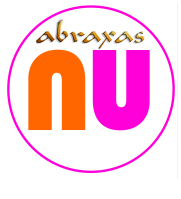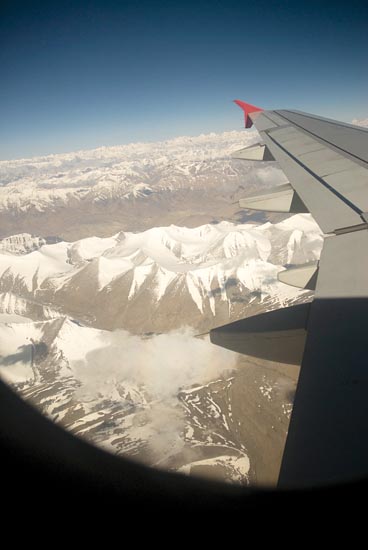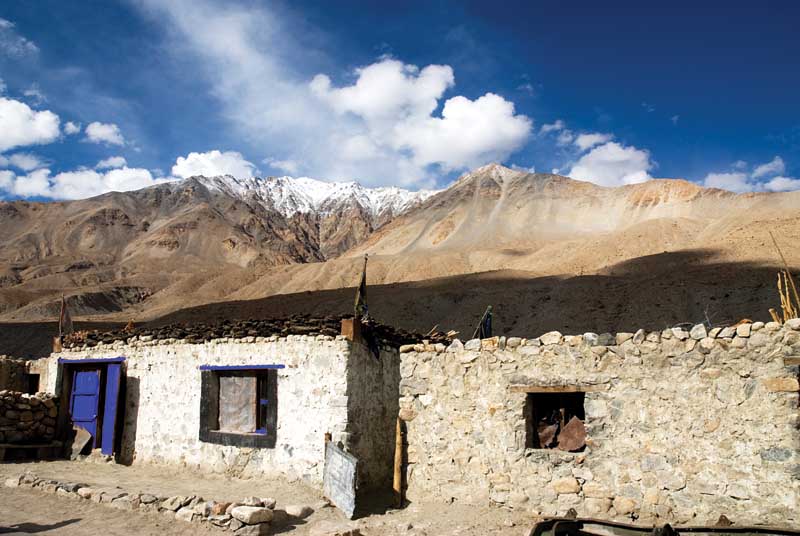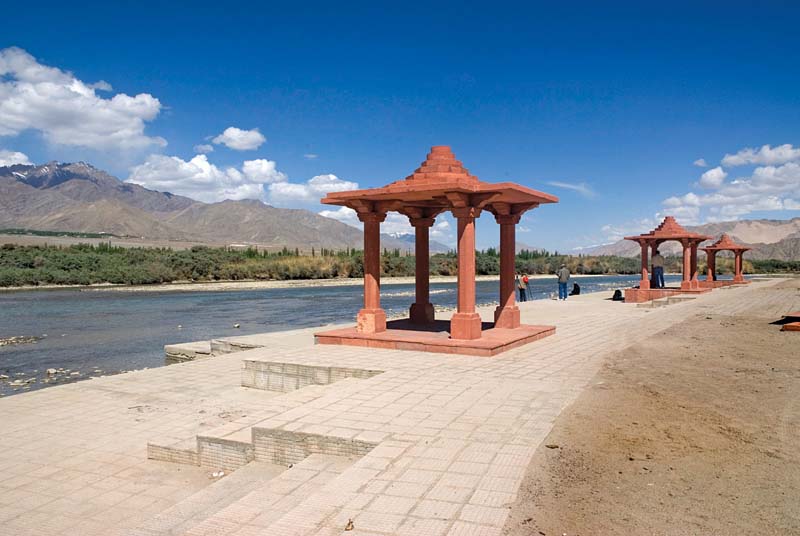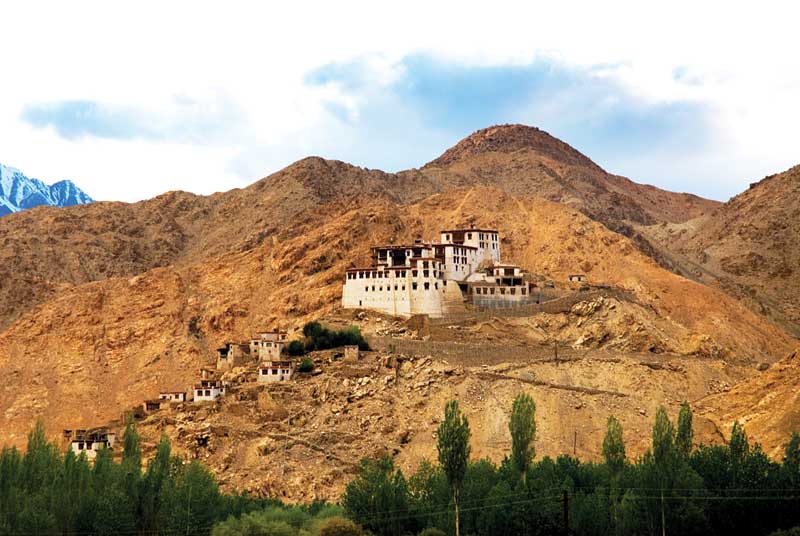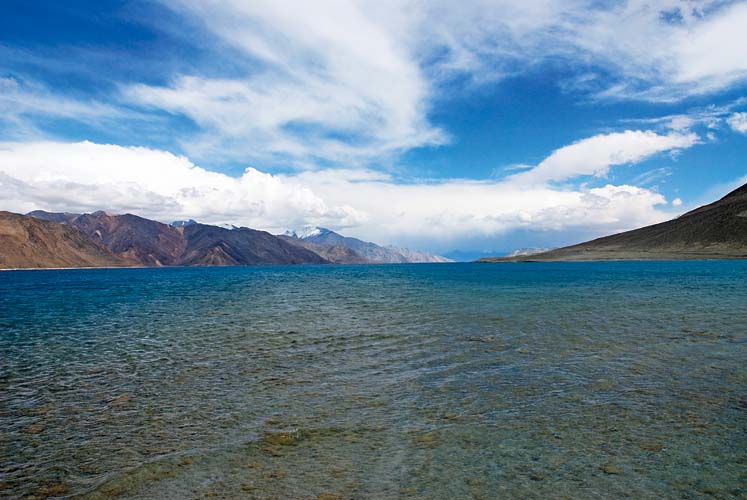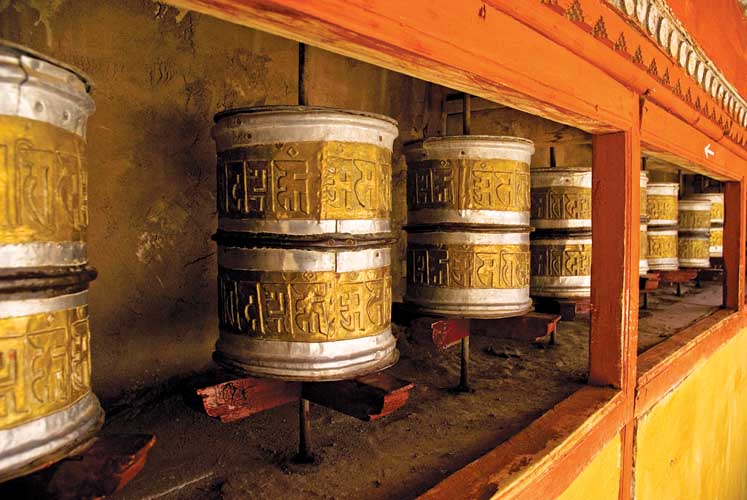The land of high passes and freezing ice deserts – Ladakh
The land of high passes and freezing ice deserts – Ladakh is among the highest of the world’s inhabited plateaus. Remote – yet just an hour’s flight away from New Delhi – this trans-Himalayan land is a repository of several cultures and religions from mainland India, China and Central Asia.
Ladakh is a region of Jammu and Kashmir, the northernmost state of the Republic of India. It lies between the Kunlun mountain range in the north and the main Great Himalayas to the south, inhabited by people of Indo-Aryan and Tibetan descent. It is one of the most sparsely populated regions in Kashmir.
Historically, the region included the Baltistan (Baltiyul) valleys, the Indus Valley, the remote Zangskar, Lahaul and Spiti to the south, Aksai Chin and Ngari, including the Rudok region and Guge, in the east, and the Nubra valleys to the north.
Contemporary Ladakh borders Tibet to the east, the Lahaul and Spiti to the south, the Vale of Kashmir, Jammu and Baltiyul regions to the west, and the trans–Kunlun territory of Xinjiang to the far north.
Day 1
It is recommended that you fly in to Leh – saving around 3 days of driving time from Delhi – though you would miss out on some very picturesque drives, specially the last sector from Manali to Leh. On the other hand, all you would be doing for most of the seven days would be driving – and more driving – so you don’t really lose out on anything.
The other very important factor is that you need to aclimatise to the high altitude of Leh (which results in both low oxygen levels in the air and low atmospheric pressure). It is very very important to take these words of caution seriously – since either one or both could lead to respiratory or cerebral edema.
So it is advised to do absolutely “nothing” on the first day – and spend the whole day in bed. Any form of physical exercise is prohibited – though many tourists do not follow these instructions – at their peril. Thankfully, a good night’s sleep is all that you require to have you raring to go the next morning.
At best, if you feel better by the evening, a short drive (not walk) around Leh town may be possible.
Day 2
You could start Day 2 with a drive to SindhuDarshan – the closest point of the Indus river from Leh town. This is a quiet and picturesque spot – with views of the river along with snow capped mountains and lush green meadows.
After spending a couple of hours, you could take a drive down towards ThikseyGompa (Gompa means monastery in the local language). It is a short but scenic drive up to the top of the mountain where the Gompa is situated. A further – and somewhat strenuous – climb of many uneven stone steps (I stopped counting after 100) leads you to the actual monastery – the view from which is breath-taking.
Here, at the monastery canteen, you can have lunch consisting of Ladakh’s state dish (or so I thought) – Maggi noodles, with their special spicy masala which the guys at Nestle haven’t heard of.
A short drive further is the town of Shey – which has the Shey Palace as well as the SheyGompa. Both are well worth a visit – though after sometime, you start suffering from Monastry Monotony (my version of the Egyptian PharaohnicPhatigue) – where the memory of one Gompa blurs into the next.
On the way back to your resort, you could make a stop-over at Leh town for shopping, or even stay on there for dinner before making your way back.
Day 3 – 4
The drive to Pangong involves crossing the third highest motorable pass in the world – Chang La. You must remember to ensure that your passes (issued by the military) have been applied for the previous day – without which you would be stopped at the first check point.
Nothing you have heard or seen would likely prepare you for the drive – climbing over 5000 feet in height in a period of less than one hour (and not inside a pressurised plane cabin) can do strange things to your mental and physical state. There is a chance that you may feel breathless and nauseous along with having a splitting headache – all caused by the lack of oxygen and low atmospheric pressure – but if your body has aclimatised well, you should be alright.
This slight inconvenience is rewarded by some great photo opportunities amidst mounds of snow. There is a small Gompa there as well, which you could climb up to, depending on the state of your breathing. The army, which regulates all traffic there, normally would not allow you to stay beyond 20 minutes at the top.
The drive down to Pangong itself is beautiful and provides several locations where you could stop and have a picnic lunch.
PangongTso (Tso means lake in the local language) – now made famous by the Bollywood mega hit 3 Idiots – is a saline – water endorheic lake situated at a height of about 14,270 feet. It is 134 km long and extends from India to China – approximately 60% of the length of the lake lies in China. The lake is 5 km wide at its broadest point. All together it covers 604 sq km.
The highlight of this lake is its sheer natural beauty – specially the colours of the water – which are said to change in hue every one hour. You would have seen many photographs of this lake – but no photograph can compare to actually being there. This one sight is worth the entire trip to Ladakh.
Recently, it has become possible to actually spend the night in a tent at the banks of the lake – which is what I would strongly recommend you to do. In fact, after one of my recent trips, sitting in front of a camp fire next to the lake with a million stars above his head, one of my students exclaimed “after having seen this sight, I can now die happily.”
The next day is a bit of a downer – since you have to leave this beautiful lake and drive back to Leh. However, during the return journey, you can stop and take photographs at several diverse scenic locations like sand dunes, flowing streams, rocky outcrops, mustard fields, etc.
Day 5-6
On this day you would cross Khardung La – the highest motorable pass in the world – with a height difference of a couple of hundred feet and an experience very similar to Chang La.
The drive further is mostly along the Shayakriver and provides opportunities for actually swimming in the river or atleast, sitting on its banks and having lunch. By late afternoon, you would be getting close to Khalsar where you have the option of following the right hand tributary towards Tirith or the left hand tributary to Diksit and Hundar.
If time permits, I would recommend you go towards Tirith and after crossing the bridge, immediately off-road towards the river bank – taking you to a wide ancient river bed of cobble stones. This is one of the most picturesque places in the Nubra Valley and looks particularly beautiful closer to sunset.
After spending a couple of hours here, I would suggest that you immediately leave for Hundar so as to reach camp before nightfall. All the camps are at the base of the mountains – we were lucky to have one with even a stream flowing through it.
The next morning, you should rise early and immediately head for the sand dunes – since the best time to see or photograph them is at sunrise. It is here that you can witness a strange sight – a dry desert landscape with sand dunes – with a stream flowing through it – at the base of very high mountains with snow capped peaks.
There are facilities of camel rides and other attractions – catering to the tourists who have started flocking to the area.
It would be advised to leave before lunch because the return journey would again take you through Khardung La – where inclement weather can result in the military not allowing traffic towards Leh – and you definitely don’t want to spend the night in your car.
Day 7
This trip is likely to be the most hectic of the entire trip – since you would drive all the way to Lama Yuru and back on the same day. On the way to Lama Yuru, there are several places worth stopping and visiting like Pathar Sahib Gurudwara, Magnetic Hill, Sangam, and if possible, AlchiGompa.
Sangam is the confluence of the Indus and Zanskar rivers – with their different colours clearly showing up in contrast. When seen from a helicopter, one can clearly see the green waters of the Indus in contrast to the muddy brown waters of the Zanskar.
Lama Yuru – known for its Gompa – is even better known for one of the strangest natural landscapes on earth – a moonscape. It resembles our image of what the moon looks like – complete with seemingly molten dirt-coloured rocks.
On the return journey if time permits, a short detour to AlchiGompa is also recommended.
The last night can be spent doing last minute shopping before the next morning’s return flight from Leh.
DAY 1:Flight into Leh / Acclimatisation (Night at Leh)
DAY 2:Leh town – SindhuDarshan – ThikseyGompa – SheyGompa and back (Night at Leh)
DAY 3:Leh – Chang La – PangongTso (Night at Pangong)
DAY 4:PangongTso – Chang La – Leh (Night at Leh)
DAY 5:Leh – Khardung La – Nubra Valley – Hundar (Night at Hundar)
DAY 6:Hundar – Nubra Valley – Khardung La – Leh (Night at Leh)
DAY 7:Leh – Pathar Sahib – Magnetic Hill – Sangam – Lamayuru and back (Night at Leh)
DAY 8:Return flight from Leh
For regular updates on Hangouts, visit our social media pages by clicking the options below:
Facebook
Twitter
Instagram
Pinterest



